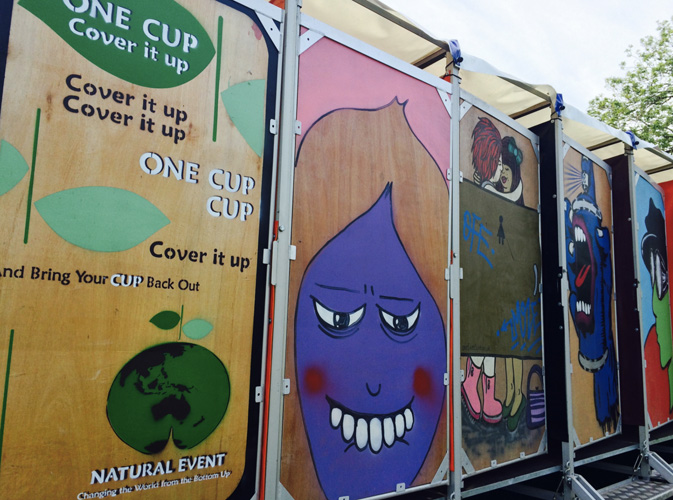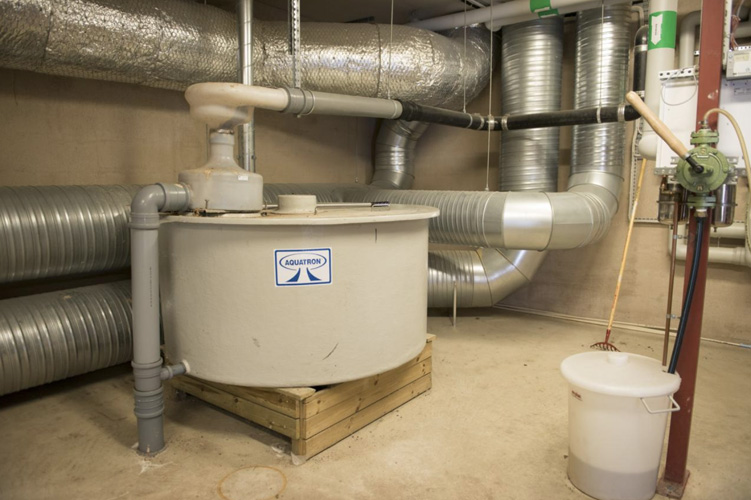The value of human manure – closing the loop
The topic of our own manure can sometimes be challenging, as it seems a difficult and uncomfortable subject to talk about.
We prefer to flush it away with water down the “pipes” to be managed by someone else usually treating it with chemicals and/or dumping it into a body of water (seas, rivers), usually one that is as far away as possible from the toilet in question.
The average Australian household would save 35,000 litres of water per year by switching to a composting toilet.
The inefficiency of water-based sewerage as a solution for taking away human manure has been well explored – there is better usage for our fresh water supplies.
We can harvest it rather than flushing
Joseph Jenkins who wrote the book The Humanure Handbook in 1999 coined the term “humanure” to describe our bodily wastes and says we can treat our manure in a number of ways – as waste and flush it away or we can remember its role in the nutrient cycle and harvest it and recycle the nutrients.
Human urine and faecal matter are a rich source of essential plant nutrients. By returning the digested nutrients (from the food we have eaten, etc.) back to the soil provides replenishment and regeneration. Importantly our human manure contains a high phosphorus content for which there is a finite and dwindling supply of phosphate rock as an agricultural product.
The extraction of phosphate rock is not only a very toxic and energy intensive process but it’s also a non-renewable resource that’s predicted to reach peak supply in 2033. After that the price of phosphorus will increase significantly, bringing the price of food up with it.
By applying appropriately treated human manure to soil we can save water, regenerate our depleted soils and diminish the need for mining of a scarce resource and close the loop on our human nutrient cycle.
Historically, human excreta “night soils” were collected from towns and village and spread in raw or composted form on fields in the surrounding farmland. This has been practiced up until recently in places like Asia and India.
However, human manure has found to contain pathogens, which can spread diseases if not treated in an effective way.
Slow composting eliminates most disease organisms in a matter of months, and should eliminate all human pathogens eventually. Thermophilic composting is the only composting method than can kill all human pathogens and parasites that can exist in human excrement.
Thermophilic composting creates heat-loving microorganisms by creating a high-temperature environment to ensure the destruction of all disease-causing organisms.
Originally commercialised in Sweden, composting toilets have been an established technology for more than 30 years.
In Australia we are adopting the use of water-less or composting toilets with states, councils and festivals providing these facilities. There are long drop toilets in NSW, SA and Victoria along roadsides, in beach-side car parks and nature reserves.
The famous Glastonbury Festival has more than 1300 compost loos on site. Closer to home in 2014 Splendour in the Grass festival held near Byron Bay in northern New South Wales installed 258 dry composting toilets from re-purposed shipping containers.
In 2019 at the Kensington Community Festival as part of the Sustainability Expo, organisers asked Natural Event to provide compost loos to encourage “city folk” to start thinking about the waste they were generating, not only plastic and food scraps but their own manure.
There are a number of home composting loos on the market. The most simple and basic compost loo for the home is the Loveable Loo, which was designed by Joseph Jenkins and is selling for around $400 to $550. It is an all-rounder composting toilet suitable for outdoor and indoor household use – no water, electricity, venting, plumbing or chemicals are required and it is totally odour free when properly managed.
If you have the space, building your own compost toilet can be relatively easy and cost efficient. Owner-built designs are usually cheaper to install and have been used widely for many years.
For more information about the type of home composting toilets available visit waterwally.com.au
Each council has its own regulations and guidelines for at-home compost toilets. Check with your local council and/or the supplier to confirm the design has approval in your area. Common off-the-shelf units have state health department approval.
Apart from the huge amount of nutrient wealth we could be adding to the soil if we composted our manure, apparently there are potentially millions of dollars’ worth of precious metals being flushed away each year, which could be recovered.
One sewage facility in Tokyo was reported to have recovered a higher yield of gold from human faeces than the world’s top gold mines! •

Jo Ryan unveils Ordered Chaos at Blender Studios






 Download the Latest Edition
Download the Latest Edition